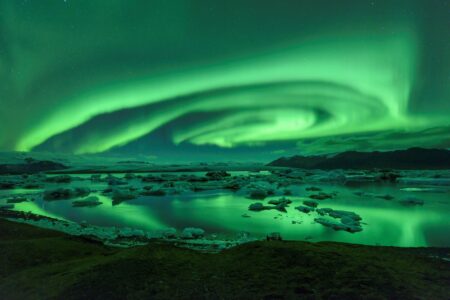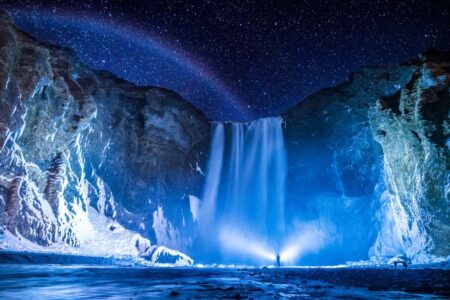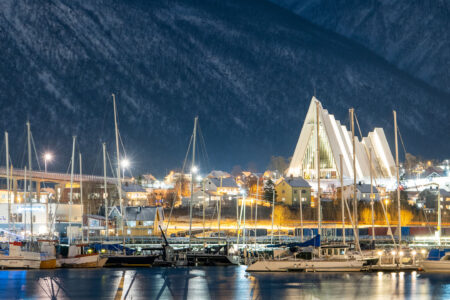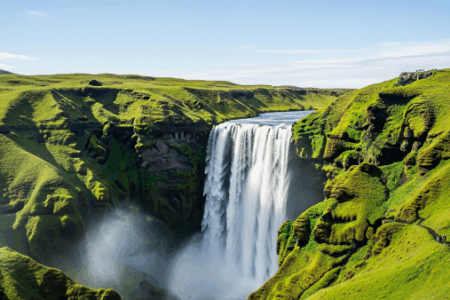For many adventurers and photographers, witnessing the Northern Lights is a once-in-a-lifetime experience. With the 2025 aurora season expected to be particularly active thanks to the peak of the solar cycle, choosing the right destination has never been more important. Two of the most sought-after locations are Norway and Iceland, both breathtakingly beautiful, yet offering very different experiences for Aurora hunters.
In this blog, we compare these two incredible destinations across key criteria to help you decide where to head for your Northern Lights adventure this year.
Aurora Activity and Visibility
When it comes to Aurora activity, both Norway and Iceland lie comfortably within the “Auroral Oval” – the zone where the Northern Lights are most commonly seen. However, geography and weather patterns play a significant role in visibility.
Norway’s edge comes from its more stable weather conditions, particularly in Northern Norway (Tromsø, Alta, and the Lofoten Islands), which often experiences clearer skies than Iceland. These regions are protected by coastal mountains and the Gulf Stream, which help reduce cloud cover.
Discover more about our classic short breaks to Norway here
Iceland, by contrast, often faces more unpredictable weather, especially during the winter months. Cloudy skies and storms can reduce the chances of a clear Aurora night. That said, when conditions are right, Iceland offers phenomenal Aurora viewing – especially in the remote areas around Mývatn, Vík, and Snæfellsnes.
Discover more about our classic short breaks to Iceland here
Landscape and Photography Opportunities
Both countries offer cinematic backdrops that make your Aurora photography into an art form.
- Iceland features dramatic volcanic landscapes, black sand beaches, ice caves, glaciers, and geothermal features. The contrast between the glowing skies and icy terrain makes for stunning images. Locations like Jökulsárlón Glacier Lagoon and Kirkjufell Mountain are favourites among photographers.
- Norway offers a more varied palette – towering fjords, snow-covered fishing villages, alpine peaks, and mirror-like Arctic fjords. The Lofoten Islands and Senja are especially striking under the Aurora, and the mix of sea, snow, and light creates a dreamlike canvas.
Accessibility and Infrastructure
For UK travellers, accessibility and infrastructure are practical concerns when choosing a destination.
- Norway is extremely well developed for Aurora tourism. Tromsø, known as the ‘Gateway to the Arctic’, has frequent flights, a wide choice of accommodation, guided tours, and modern amenities. Travel around Northern Norway is easy, even in winter, thanks to excellent roads and public transport.
- Iceland, while also popular with tourists, has more limited infrastructure in rural areas. Outside Reykjavik and Akureyri, you may find fewer services, particularly in harsh winter conditions. Hiring a 4×4 vehicle is often necessary to reach the best viewing spots, and road closures due to weather are common.
Cultural Experience
Both countries offer rich cultural elements beyond the Northern Lights.
- Norway gives you the chance to experience Sámi culture, dog sledding, reindeer encounters, and even stay in a traditional lavvu (tent). Cities like Tromsø blend modern Arctic life with deep-rooted traditions. Discover more about our exclusive Aurora holidays to Norway here
- Iceland offers geothermal spas, sagas, folklore, and one of the most unique landscapes on Earth. There’s a certain mystique to Iceland, bubbling hot geo-thermal springs, lava fields, and its isolation that appeals to the adventurous.
Discover more about our exclusive Aurora holidays to Iceland here
Verdict: Norway or Iceland in 2025?
If your priority is maximum Aurora visibility and convenience, Norway takes the lead. With more consistent weather, excellent infrastructure, and equally breathtaking scenery, it’s a reliable choice for both first-time and repeat aurora seekers.
If you’re chasing a more rugged, raw, and adventurous experience, Iceland may be your perfect match – particularly if you’re willing to brave the elements and explore further off the beaten path.
Ultimately, both destinations promise unforgettable Northern Lights experiences. With the 2025 season set to be one of the best in years, either choice will offer front-row seats to one of nature’s most magical shows.





